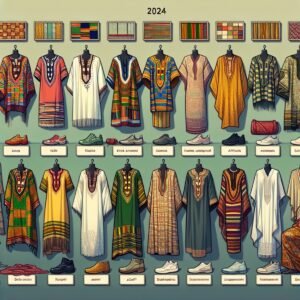
Understanding the Importance of Fabric Quantity Calculation Calculate Fabric Quantity
Calculating the fabric quantity for your kurta is a crucial step in ensuring that you have enough material for your garment. Here are some key points to consider when understanding the importance of fabric quantity calculation:
- Accurate Measurement: Properly calculating the fabric quantity ensures that you have enough material to complete your kurta without running out mid-production. This helps avoid delays and ensures a seamless sewing process.
- Cost Efficiency: By accurately calculating the fabric quantity needed for your kurta, you can minimize wastage. This not only saves money but also promotes sustainability by reducing excess fabric usage.
- Design Integrity: Fabric quantity calculation is essential for maintaining the design integrity of your kurta. Having the right amount of fabric ensures that the garment falls and drapes correctly, as per the intended design.
- Pattern Matching: Calculating fabric quantity is crucial for pattern matching, especially with printed or striped fabrics. Sufficient material is needed to match patterns seamlessly across the garment for a polished look.
- Customization: If you are customizing your kurta with added features like pockets, trims, or embellishments, precise fabric quantity calculation is vital to accommodate these elements without running short on material.
In conclusion, understanding the importance of fabric quantity calculation is key to a successful kurta-making process. It ensures efficiency, cost-effectiveness, design accuracy, pattern matching, and customization possibilities. By mastering this aspect of garment construction, you can elevate the quality and aesthetics of your kurta creations.
Measuring your body for accurate fabric quantity

When it comes to calculating fabric quantity for your kurta, accurate measurements of your body are crucial. Here are some tips to ensure you get the right amount of fabric:
- Take precise body measurements: Use a flexible measuring tape to measure your chest, waist, hips, and the length of the kurta. Make sure the tape is snug but not tight against your body for accurate measurements.
- Consider ease allowance: Keep in mind the ease allowance you prefer in your kurta. Generally, 2-4 inches are added to the body measurements for a comfortable fit, but this can vary based on personal preference.
- Calculate fabric requirements: Once you have your body measurements and ease allowance figured out, use a pattern or reference guide to calculate the fabric requirements. Remember to account for seam allowances and any design details like pockets or pleats.
- Consult a size chart: If you are using a standard size chart for your kurta, match your body measurements to the corresponding size to determine the fabric quantity needed for that particular size.
- Double-check your calculations: Before making a final decision on the fabric quantity, double-check all your measurements and calculations to avoid any mistakes that could lead to fabric wastage or a poorly fitting kurta.
By following these steps and ensuring accurate measurements of your body, you can calculate the right fabric quantity for your kurta project.
Calculating fabric requirement based on design and style
Understanding the design and style of your kurta is crucial when determining the fabric quantity needed. Here are some key points to consider:
- Type of fabric: Different fabrics have varying widths, which directly impacts the amount of fabric required. Be mindful of this when selecting the fabric for your kurta.
- Length of the kurta: The length of your kurta will dictate how much fabric you need. Measure from the shoulder to where you want the kurta to end to get an accurate measurement.
- Sleeve length: If your kurta has sleeves, remember to account for their length when calculating fabric quantity. Measure from the shoulder to the desired sleeve length.
- Silhouette: The silhouette of your kurta, whether it’s fitted or loose, will influence the amount of fabric needed. Fitted kurtas generally require more fabric than loose ones.
- Additional design elements: If your kurta has additional design elements like flares, pleats, or embellishments, make sure to factor these into your fabric calculation.
When in doubt, it’s always better to err on the side of caution and purchase slightly more fabric than you think you need. This allows for any errors during cutting or stitching, ensuring you have enough fabric to complete your kurta without any hiccups.
By considering these factors and accurately measuring the dimensions of your kurta design, you can confidently calculate the fabric requirement for your project.
Adding extra fabric for shrinkage and adjustments

When calculating fabric quantity for your kurta, it is essential to account for potential shrinkage and the need for adjustments. Here are some tips to help you factor in extra fabric:
- Shrinkage allowance: Shrinkage can occur during the washing or dyeing process. It is recommended to add an extra 5-10% of fabric to accommodate any potential shrinkage. This ensures that your kurta maintains its proper size and shape after laundering.
- Pattern matching: If your kurta has a specific print or pattern that requires matching across seams, additional fabric will be needed to ensure proper alignment. It is advisable to consult the pattern layout and add extra fabric accordingly.
- Adjustment margins: To allow for any alterations or adjustments during the tailoring process, adding a few extra inches of fabric can be helpful. This extra fabric will provide room for modifications such as lengthening or widening the garment as needed.
- Contingency: It is always a good idea to have a bit of extra fabric on hand in case of any unforeseen mishaps during the sewing process. Having a buffer of fabric available can save you from running out and ensure that your kurta is completed without delays.
By factoring in these considerations and adding extra fabric for shrinkage and adjustments, you can ensure that you have enough material to create a well-fitted and flawless kurta.
Considering Fabric Width and Pattern Repeat for Efficient Calculation
When calculating fabric quantity for your kurta, it is essential to consider the fabric width and pattern repeat to ensure an accurate estimate. Here are some tips to help you efficiently calculate the required yardage:
- Understand Fabric Width: Start by familiarizing yourself with the standard fabric widths available in the market. The most common widths for fabric are 36 inches, 45 inches, 54 inches, and 60 inches. Knowing the width of the fabric will allow you to determine how many linear yards you need based on the width of the fabric.
- Account for Pattern Repeat: If your fabric has a specific pattern or design that repeats across the fabric width, you will need to account for this when calculating the yardage. Measure the pattern repeat and adjust your yardage calculation accordingly to ensure you have enough fabric to match up the patterns when cutting and sewing your kurta.
- Calculate Linear Yards: To calculate the linear yards of fabric required for your kurta, divide the total fabric width needed by the width of the fabric you have selected. This will give you the number of linear yards you need to purchase. Don’t forget to add extra yardage for seam allowances, hems, and any pattern matching.
- Consider Directional Prints: If your fabric has a directional print, such as stripes or motifs that need to be placed in a specific orientation, you may need additional fabric to ensure the pattern is aligned correctly on the kurta. Factor this into your yardage calculation to avoid running short on fabric.
- Consult a Professional: If you are unsure about calculating fabric quantity based on fabric width and pattern repeat, don’t hesitate to seek advice from a professional seamstress or tailor. They can provide guidance on how to accurately measure and calculate the fabric needed for your kurta.
By considering fabric width and pattern repeat in your calculations, you can ensure that you purchase the right amount of fabric for your kurta project, saving you time, money, and potential fabric wastage.
Calculating fabric quantity for different types of kurtas (long, short, Anarkali, etc.)
To calculate fabric quantity for different types of kurtas, one must consider the specific design features of each style. Here are some tips on how to calculate fabric quantity for various types of kurtas:
- Long Kurtas: For long kurtas, the length of the garment is the primary factor to consider. Measure from the shoulder down to the desired length, adding extra for hems and seam allowances. Multiply the length by the width of the fabric to determine the total fabric required for a long kurta.
- Short Kurtas: Short kurtas typically require less fabric compared to long kurtas. Measure the desired length of the short kurta and multiply it by the fabric width to determine the fabric quantity needed. Remember to account for hems and seam allowances.
- Anarkali Kurtas: Anarkali kurtas are typically voluminous and flared at the bottom. Measure the length from shoulder to desired flare length, and then multiply it by the width of the fabric. Additionally, calculate the flare circumference at the bottom hem to ensure there is enough fabric to achieve the desired volume.
- Straight Cut Kurtas: Straight cut kurtas are relatively easier to calculate fabric quantity for. Measure the length from shoulder to the desired hem, accounting for hems and seam allowances. Multiply this measurement by the fabric width to determine the fabric requirement.
- A-Line Kurtas: A-line kurtas are narrower at the top and wider at the bottom, forming an A shape. Measure the length from shoulder to the widest part of the kurta. Multiply this measurement by the width of the fabric and add extra for the flare at the bottom.
Remember, always add a buffer of a few inches to account for any cutting errors or adjustments during the stitching process. Calculating fabric quantity accurately can ensure that you have enough material for your kurta project.
Tips for sourcing fabric and purchasing the right quantity
- When sourcing fabric for your kurta, ensure that you choose a fabric that is suitable for the style and purpose of the garment.
- Consider the length and width of the fabric when calculating the quantity needed for your kurta.
- Remember to account for any pattern matching or directional prints when determining the fabric quantity required.
- It is advisable to add a little extra fabric to your calculations to accommodate any errors or modifications during the tailoring process.
- Always check the fabric care instructions to ensure that the fabric is suitable for the desired outcome of your kurta.
Using online tools and calculators for accurate fabric quantity calculation
- Utilize online calculators and tools specifically designed for calculating fabric quantity for garments like kurtas.
- These tools often require inputting key measurements such as garment size, length, width, and any additional details like pleats or ruffles.
- Online tools can provide precise fabric quantity estimates based on the inputs you provide, taking the guesswork out of the process.
Online calculators can save time and effort by swiftly generating accurate fabric requirements for your kurta projects.
- Look for calculators that allow you to factor in shrinkage rates for different fabrics to ensure your calculations consider post-wash adjustments.
- Consider using CAD software programs that offer fabric consumption calculations to optimize layout efficiency and reduce waste.
CAD software programs can provide detailed insights into fabric requirements and cutting patterns to maximize efficiency in your kurta production.
- Take advantage of fabric suppliers’ websites that offer fabric yardage calculators based on the type of garment you are making.
- Verify the calculations manually to guarantee accuracy in the final fabric quantity needed for your kurta projects.
Double-checking calculations ensures you have the correct fabric quantity before beginning your kurta creation process.
Optimizing fabric layout and cutting for minimal wastage
When cutting fabric for a kurta, minimizing wastage is essential to ensure cost-effectiveness and sustainability in your production process. Here are some tips to help you optimize fabric layout and cutting for minimal wastage:
- Plan ahead: Before cutting your fabric, carefully plan the layout to ensure maximum utilization of the material. This involves strategically placing pattern pieces on the fabric to minimize leftover scraps.
- Use efficient cutting techniques: Explore different cutting techniques such as batching similar pieces together to reduce the number of cuts needed. This method helps in minimizing fabric wastage by avoiding unnecessary scraps.
- Consider fabric width: When estimating fabric quantity, take into account the width of the fabric roll. Adjust your pattern layout to fit the width efficiently, reducing the amount of fabric needed for the kurta.
- Opt for strategic pattern placement: Place pattern pieces close together while maintaining the required seam allowances. This practice helps in reducing the overall fabric wastage and maximizing the use of each material.
- Invest in cutting tools: High-quality cutting tools like rotary cutters and sharp scissors can aid in precise cuts, minimizing errors that could lead to fabric wastage during the cutting process.
By following these tips and implementing efficient fabric layout and cutting techniques, you can significantly reduce wastage and optimize fabric usage when creating kurtas.
Common Mistakes to Avoid When Calculating Fabric Quantity for Your Kurta
When calculating fabric quantity for your kurta, there are some common mistakes that you should avoid to ensure that you have enough fabric for your project. Here are some mistakes to steer clear of:
- Underestimating Fabric Requirements: One of the most common mistakes is underestimating the amount of fabric needed for your kurta. Always double-check your measurements and pattern requirements to avoid running short of fabric.
- Not accounting for Pattern Matching: If your kurta fabric has a specific pattern that needs to be matched, failing to account for this can result in wastage of fabric. Make sure to calculate extra fabric for pattern matching to achieve a seamless look.
- Ignoring Fabric Width: Fabric width plays a crucial role in determining the quantity of fabric needed. Ignoring the fabric width can lead to inaccurate calculations. Always consider the width of the fabric when calculating the required yardage.
- Not Adding Extra for Alterations: When calculating fabric quantity, it’s essential to factor in extra fabric for any alterations or mistakes that may occur during the stitching process. Having a buffer of extra fabric can save you from potential errors.
- Neglecting Shrinkage: Fabrics can shrink after washing, so failing to account for shrinkage can leave you with a kurta that is smaller than intended. Be sure to prewash your fabric and calculate the shrinkage rate to adjust your fabric quantity accordingly.
Avoiding these common mistakes will help you accurately calculate the fabric quantity needed for your kurta, ensuring a smooth sewing process without any fabric shortages.
FAQ
The amount of cloth required for a kurta can vary depending on factors such as the size of the person, the style of the kurta, the fabric width, and any design details. However, as a general guideline, here’s an approximate estimate of fabric required for a standard-sized kurta:
Basic Kurta without Salwar or Churidar:
For a knee-length kurta (approximately 40-42 inches long), you will need around 2.5 to 3 meters of fabric.
For a longer kurta (below knee-length), you may need around 3 to 3.5 meters of fabric.
This estimation assumes a fabric width of around 44 to 45 inches. If the fabric width is less, you may need more fabric.
Kurta with Salwar or Churidar:
For a knee-length kurta with a matching salwar or churidar, you will need around 4 to 4.5 meters of fabric for both the kurta and bottom wear combined.
For a longer kurta with salwar or churidar, you may need around 4.5 to 5 meters of fabric.
Again, this estimation assumes a fabric width of around 44 to 45 inches.
Anarkali or Flared Kurta:
For an anarkali or flared kurta, you may need more fabric due to the extra flare and length. Approximately 3.5 to 4 meters of fabric would be required for a knee-length anarkali, and around 4.5 to 5 meters for a longer version.
Plus Sizes or Customizations:
If the person wearing the kurta is larger in size, or if you’re customizing the kurta with additional design elements like embroidery, pleats, or large motifs, you may need extra fabric. It’s advisable to add at least half a meter to a meter of fabric to accommodate these adjustments.
Remember, these are approximate estimates and actual fabric requirements may vary based on individual measurements and design choices. It’s always a good idea to consult your pattern instructions or a professional tailor for more accurate calculations based on your specific requirements.






